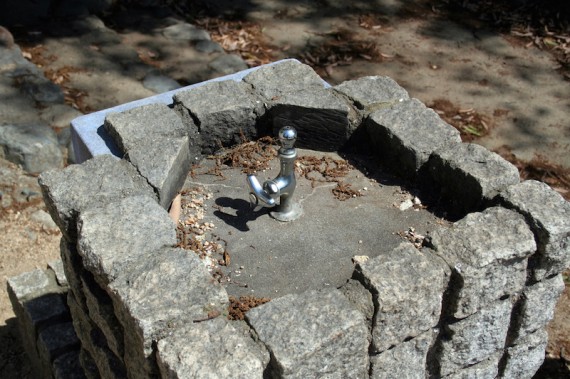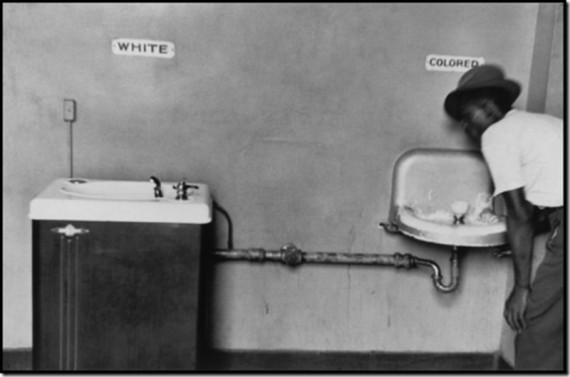Drinking Fountains: The drinking fountain can be a powerful signifier. Though simple in purpose and function, it stands as a physical manifestation of common biological needs while staking claim to public spaces we all share: parks, streets, airports, libraries. A drinking fountain might well be “read” as an invitation to linger; but as the civil rights struggle in the United States showed, it can also be used to divide society along racial or ethnic lines: to mark social spaces where insidious ideologies oppress, demean, and segregate minorities.
This week, find and photograph a drinking fountain. Where do you encounter them? Is there any logic to their placement? What message(s) do they communicate? Do drinking fountains bring people together or keep them apart? Take a picture of a drinking fountain you have used. If there are none, speculate as to why.
Ryan Hildebrandt ’17, Psychology & Japanese
Drinking fountains? There aren’t any. Anywhere (or at least it feels like they’re never where you need them when you need them). Not in train stations, not on University campuses, and rarely in parks or other public spaces. This posed a special challenge when walking was my main form of transportation throughout Kyoto, and I had to plan accordingly in order to make sure I didn’t run out mid excursion. Usually my best bet was to leave the house with a full bottle and refill at lunch, making sure to have an extra glass of water at each meal to keep ahead of dehydration throughout the day. Instead, there are beverage vending machines and convenience stores on even the most remote outskirts of the city, so a couple hundred yen water allowance was always a good idea.
Katrina Bennett ’16 Neuroscience
Drinking fountains are found fairly commonly in Cape Town, although not nearly as commonly as in many places in the United States. I have seen drinking fountains on the campus of University of Cape Town, on hiking trails up mountains and at the organization where I work. More interesting than the occurrence of water fountains in Cape Town though, is the occurrence of what the water is put into, water bottles. On the first day of one of my lectures my professor remarked, “You know how we can always tell who is American and who isn’t? The Americans always have water bottles out in front of them. Americans are obsessed with hydration!” After my professor said this, I started consciously thinking about this and analyzing this and she was so right! The majority of individuals carrying water bottles around with them were Americans rather than South Africans. The more sparse occurrence of water fountains in Cape Town therefore, must be because hydrating doesn’t seem to be as much of a top priority here as it is in the United States.



